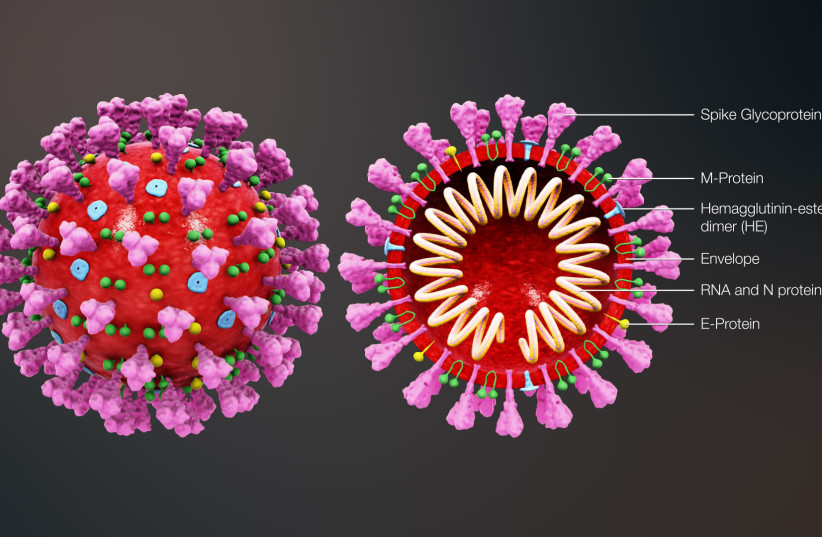The study was carried out by Professor Li Lanjuan and colleagues from Zhejiang University in Hangzhou, China and published in a non-peer reviewed paper released on website medRxiv.org on Sunday.
3D medical animation still shot showing the structure of a coronavirus
(photo credit: WWW.SCIENTIFICANIMATIONS.COM)
A new study in China has found that the novel coronavirus has mutated into at least 30 different variations.
The results showed that medical officials have vastly underestimated the overall ability of the virus to mutate, in findings that different strains have affected different parts of the world, leading to potential difficulties in finding an overall cure.
The study was carried out by Professor Li Lanjuan and colleagues from Zhejiang University in Hangzhou, China and published in a non-peer reviewed paper released on website medRxiv.org on Sunday.
Li’s team analyzed the strains from 11 randomly chosen coronavirus patients from Hangzhou, where there have been 1,264 reported cases, and then tested how efficiently they could infect and kill cells.
More than 30 different mutations were detected, of which 19 were previously undiscovered.
“Sars-CoV-2 has acquired mutations capable of substantially changing its pathogenicity,” Li wrote in the paper.
The team discovered that some of the mutations could lead to functional changes in the virus’ spike protein, the South China Morning Post reported. Spike protein is the protein that the coronavirus uses to attach itself to human cells.
Li ‘s team infected cells with COVID-19 strains carrying different mutations, of which the most aggressive strains were found to generate as much as 270 times as much viral load as the weakest strains. The aggressive strains also killed the human cells the fastest.
The results indicated “that the true diversity of the viral strains is still largely underappreciated,” Li wrote.
The study could have future implications on the treatment of coronavirus, as several different strains have been found throughout the world. The United States, which has the world’s worst death toll at 42,897, and 799,515 overall cases, has been struck by different mutations. New York, which itself had the worst death rate in the US, and the eastern coast show a strain of coronavirus similar to that found in Europe, whereas the western US has shown similarities with strains found in China.
Coronavirus has so far been treated in hospitals worldwide as one disease and patients receive the same treatment regardless of the strain. It has been suggested by the team at Zhejiang University that defining mutations in different regions may change the way we approach combating the virus.
“Drug and vaccine development, while urgent, need to take the impact of these accumulating mutations into account to avoid potential pitfalls,” the scientists said.


